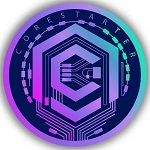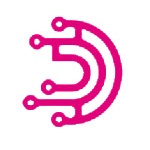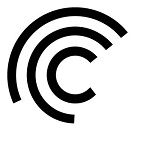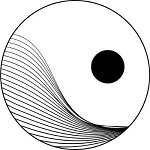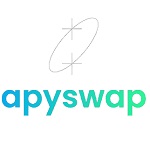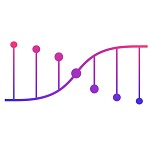Polkadot Ecosystem
| Projects | Status | Date start | Raised | Launchpad | Ecosystem | X score | Interest lvl | Industry | ||
|---|---|---|---|---|---|---|---|---|---|---|
ICO Past | Mar 20, 2025 | Real Estate +4 | ||||||||
| TBA | Blockchain +2 | |||||||||
| TBA | ||||||||||
ICO | TBA | $247,76M | Blockchain +3 | |||||||
IDO Past | Aug 13, 2022 | Blockchain +1 | ||||||||
IEO Past | Jan 11, 2022 | Blockchain +1 | ||||||||
IDO Past | Nov 15, 2021 | Crowdfunding & Lending +2 | ||||||||
DAICO Past | Nov 15, 2021 | $15M | Web 3.0 +1 | |||||||
IDO Past | Oct 26, 2021 | Blockchain +1 | ||||||||
IDO Past | Oct 13, 2021 | Multi-Chain Platform +1 | ||||||||
IDO Past | Sep 10, 2021 | Blockchain +2 | ||||||||
IDO Past | Sep 14, 2021 | Multi-Chain Platform +1 | ||||||||
IDO Past | Jun 25, 2023 | Commerce & Retail +3 | ||||||||
IDO Past | Oct 27, 2021 | Exchanges & Wallets +1 | ||||||||
| Oct 27, 2021 | Blockchain +2 | |||||||||
ICO Past | Oct 27, 2021 | $0,13M | Blockchain +2 | |||||||
| Oct 27, 2021 | Finance +2 | |||||||||
IEO Past | Jun 24, 2021 | Blockchain +1 | ||||||||
IEO Past | May 26, 2021 | Finance +2 | ||||||||
ICO IDO Past | Apr 14, 2021 | $2,7M | Trading & Investing +3 | |||||||
IDO IEO Past | Apr 26, 2021 | $0,6M | DeFi +1 | |||||||
ICO Past | Apr 26, 2021 | Finance +1 | ||||||||
IDO IEO Past | Apr 16, 2021 | $0,24M | Privacy & Security +2 | |||||||
IEO Past | Apr 20, 2021 | $57,4M | Exchanges & Wallets +2 | |||||||
ICO Past | Apr 20, 2021 | DeFi +1 | ||||||||
ICO Past | Apr 20, 2021 | Blockchain +2 | ||||||||
IEO Past | Feb 25, 2021 | Blockchain +2 | ||||||||
IEO Past | Mar 11, 2021 | Finance | ||||||||
ICO IEO Past | Jan 29, 2021 | Blockchain +2 | ||||||||
| Jan 29, 2021 | Crowdfunding & Lending +3 | |||||||||
ICO Past | Jan 29, 2021 | Blockchain | ||||||||
ICO Past | Jan 29, 2021 | Insurance | ||||||||
ICO Past | Jan 29, 2021 | DeFi +1 | ||||||||
ICO Past | Jan 29, 2021 | $2,5M | Blockchain +2 | |||||||
ICO IEO Past | Jul 21, 2020 | $145M | Blockchain | |||||||
ICO Past | Jul 21, 2020 | $21,51M | AI +1 | |||||||
What is Polkadot network
Polkadot is one of the leading zero-tier blockchain platforms that enables secure communication between blockchains. Thus, the main objective of the project is to provide the crypto market with an environment where different blockchains can conduct transactions with each other.
Polkadot was launched in 2016 by Gavin Woods, co-founder of ETH and author of Solidity for Ethereum. Another former Ethereum developer, Jutta Steiner, was also involved in the launch of the project. Together, they started Parity Technologies, which is developing Polkadot. In 2017, Woods also launched the Web3 Foundation, a non-profit organization that manages the project, providing funding and promotion.
Initially, Polkadot was run on Ethereum software. However, over time, the team moved to a standalone blockchain.
Partners & investors
- Fabric Ventures
- 1confirmation
- HashKey Capital
- Pantera Capital
- IOSG Ventures
- Fundamental Labs
- Continue Capital
- Placeholder
- CoinFund
- Fenbushi Capital
- Nirvana Capital
- Shima Capital
- Fabric Ventures
- Bitscale Capital
- Mapleblock Capital
- Fifth Era and more.
Some of Polkadot most popular partners include:
- Chainlink
- Acala
- Moonbeam
- Plasm Network
- Basilisk and many others.
Key mechanisms of Polkadot blockchain
Let’s take a look at Polkadot technologies and understand in detail how the development works.
Polkadot is formed from several software components:
- Parachain
- Relay Chain
- Bridges
It is easier to understand how the ecosystem works if we compare cryptocurrency with fiat money or various companies, nodes. For example, in the absence of intermediate nodes, it would be impossible to transfer money from one bank account to another. This also applies to postal operators, and electronic payment systems.
Polkadot developers are trying to solve the problem with the NPoS or Nominated Proof-of-Stake algorithm. And parachain networks use a version of the PoW algorithm called Blind Assignment for Blockchain Extension (BABE).
The Polkadot Hybrid Consensus includes 4 groups of participants that keep the blockchain running:
- Validators
- Nominators
- Collectors
- Fishers
Scalability and speed as characteristics set the project apart from its competitors. In the process of transaction processing there are several parallel processes. This is facilitated by the very parachains.
In addition, the Substrate workspace is available, which is used to create a client blockchain. Then your own ‘chain’ can be integrated into the system in a few steps.
There is also an automatic update function. This eliminates debugging processes such as error correction, optimisation. Security in the ecosystem is supported by independent but complex nodes: validators, nominators. The system manages the elements of the chain according to the rules, but independently. It is possible to realize secure transactions at the expense of parachains.
Polkadot has over 500 projects launched in its ecosystem, including DEX, DeFi apps, NFT products, cryptocurrency wallets, gambling and gaming apps, infrastructure projects, oracles and more.
Advantages of Polkadot
- Interoperability
- Scalability
- Opportunities to create a new blockchain that is compatible with the entire ecosystem
- Rewards and penalties system
Token DOT
DOT is a token, also known as the Polkadot ecosystem own cryptocurrency. It is not just a token, but a full-fledged network coin used for network management, staking and communication.
DOT has several key functions: governance (DOT holders can vote on protocol changes), staking (securing the network through stakes) and communication (acting as collateral for the creation of new parachains).
Notably, the redenomination of DOT, the native coin of the Polkadot blockchain, took place on 21 August 2020. As of this date, one old DOT equals 100 new DOTs.
Conclusion
Polkadot represents one of the most promising and technologically advanced blockchain projects. By using its unique configuration and support for multiple blockchains, Polkadot unlocks new opportunities for scaling and collaboration in the cryptocurrency world, making it more interconnected and efficient.
Note that Polkadot is gearing up for global updates in the near future. Thus, the ecosystem will turn into Polkadot 2.0.
This solution includes robust additions like Agile Coretime, Asynchronous Backing and Elastic Scaling, aimed at creating a network that will be adaptable, fast and able to efficiently handle growing demand.
With the upgrade, Polkadot is moving from a one-way blockchain technology to an advanced, highly decentralized network designed to facilitate the development of a decentralized internet.







